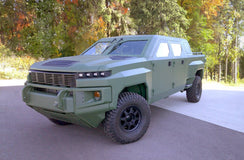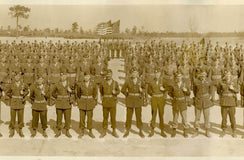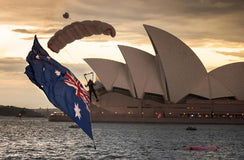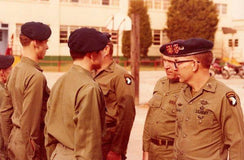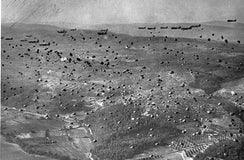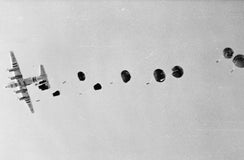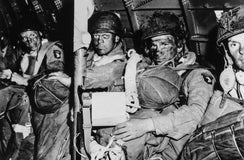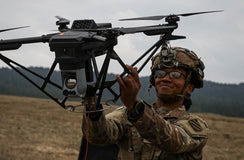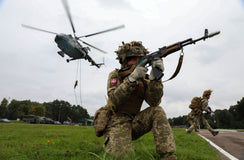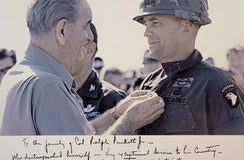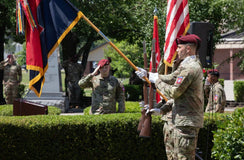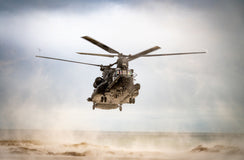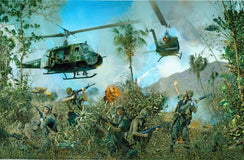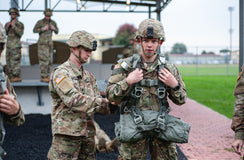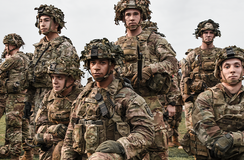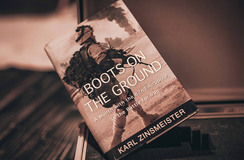Operation Restore Democracy: The Landing that Never Happened
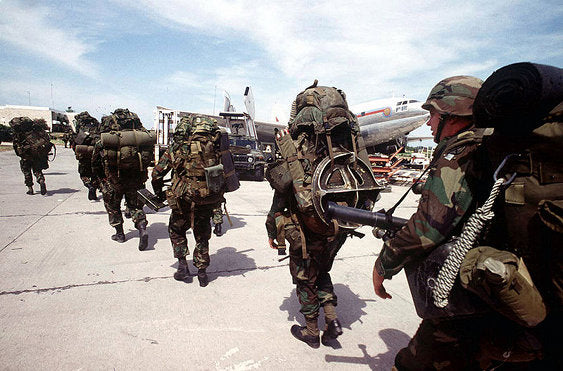
Operation Restore Democracy: The Landing that Never Happened
In the early 1990s, Haiti's democracy was in constant crisis, and the island was being governed by unconstitutional leadership. The regimes kept changing but lacked national and international legitimacy, leading to U.N. sanctions. The United States created a multinational force (MNF) to lead Operation Restore Democracy, conducting a forcible entry to restore democracy. Who was called up? America's Contingency Corps.
U.S. Soldiers prepare to load a plane before an operation.
Background and the Road to the Crisis in Haiti
Since the election of Jean-Bertrand Aristide in 1990, the Caribbean state entered into a series of crises, from one regime to another. This led to a deterioration of human rights, repression, killings, and rape, and many Haitians decided to migrate from their country. The international community continued to put pressure on those in power by introducing political and economic sanctions, but to no avail.
After a series of political turmoil and continued failed diplomatic efforts by the United Nations, Haiti was being governed de facto by the military. After multiple efforts to resolve the matter, the United Nations Security Council passed resolution 940 authorizing member states to use all necessary means to enable the departure of Haiti's non-democratic leadership. The end state was to restore Aristide to the presidency, foster democratic institutions, and stop the flow of illegal immigrants to the United States.
Operation Uphold Democracy vs Operation Restore Democracy.
The United States had been preparing for this operation for months. They handpicked XVIII Corps as the ultimate organization that would get the job done and excel at it. Joint Task Force 180, during the preparation phase, had trained in Camp Lejeune, NC; Fort Bragg, NC, and Fort Eustis, VA. Exercise Super Thrust I preceded Exercise Super Thrust II, forming a concept of operation and rehearsing the synchronization of critical ops for the upcoming invasion.
JTF-180, under the command of USACOM mandated by the United Nations, was organized as a Multinational Force (MNF) led by the U.S. and supported by a dozen other nations to enter Haiti. They had trained for a forcible entry, with two options on hand: Operation Uphold Democracy – a permissive entry, and Operation Restore Democracy – a forced entry into Haiti. The latter would only be an option if negotiations to allow permissive entry failed.

The 82nd Airborne Division: Preceded by its Reputation
The de-facto leader and dictator of Haiti, General Raoul Cédras, refused any idea of a diplomatic solution presented to him by the US negotiation team, led by retired general Colin Powell. His determination was greatly shaken when he was presented with a video of the 82nd Airborne Division preparing for an invasion of his country. Colin Powell told the Haiti dictator, "The troops are coming; the planes are up." The first in line was the 1st Battalion ("Red Falcons"), 325th Airborne Infantry Regiment, designated as Division's Ready Force 1 (DRF-1), ready to deploy with its equipment and vehicles out of Ft. Sherman, Panama. Additionally, the 2nd Battalion of the 325th ("White Falcons") was attached to the 82nd's 1st Brigade, designated as the 82nd Airborne Division Ready Brigade -1 (DRB-1). The United States Special Operations were the other key element that would spearhead the airborne invasion.
General Cédras' jaw dropped from the fear-inducing images of thousands of American paratroopers loading the aircraft for the mission. Then he was informed that in fact, the video was from 2 hours old and not a live feed. Thus, 3,900 paratroopers from the 82nd Airborne Division and over 100 aircraft had left Fort Bragg and were crossing the Atlantic on their route to Haiti. Terrified, the general knew that regardless of his approval or not, defeat was imminent within hours.
The Airborne Assault That Never Was: Enter Operation Uphold Democracy
The paratroopers were packed, rigged, ready, and loaded into C-130s to conduct the airborne assault. This was the moment many of them had been prepping for a long time, and the gold combat star would be added to their airborne wings. Fate would have it that the forcible entry would never happen, and turned into a peacekeeping mission. Two hours away from execution, the military leaders of Haiti had agreed to the terms of surrender, causing great disappointment to many paratroopers from the All-American Division. Operation Uphold Democracy achieved its mission by removing the dictator and facilitating the eventual transition of power to the United Nations Mission in Haiti.
This is a classic example of what U.S. paratroopers are capable of, both physically and psychologically. It came to show that, sometimes, all it takes to accomplish the mission is basically to send the word out that "the U.S. paratroopers are coming for you."
Then the rest will take care of itself.


